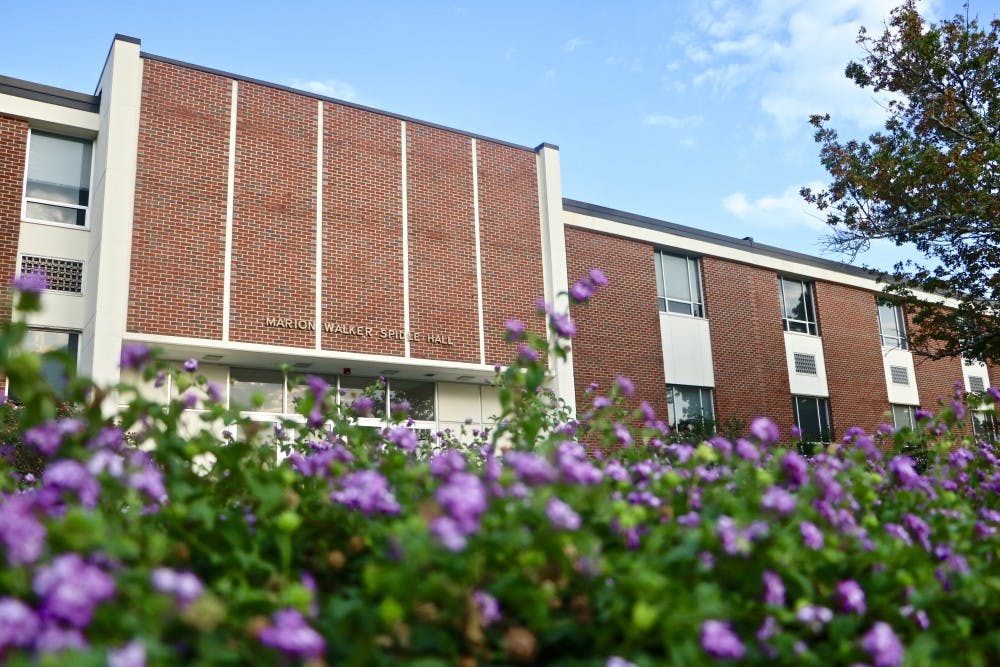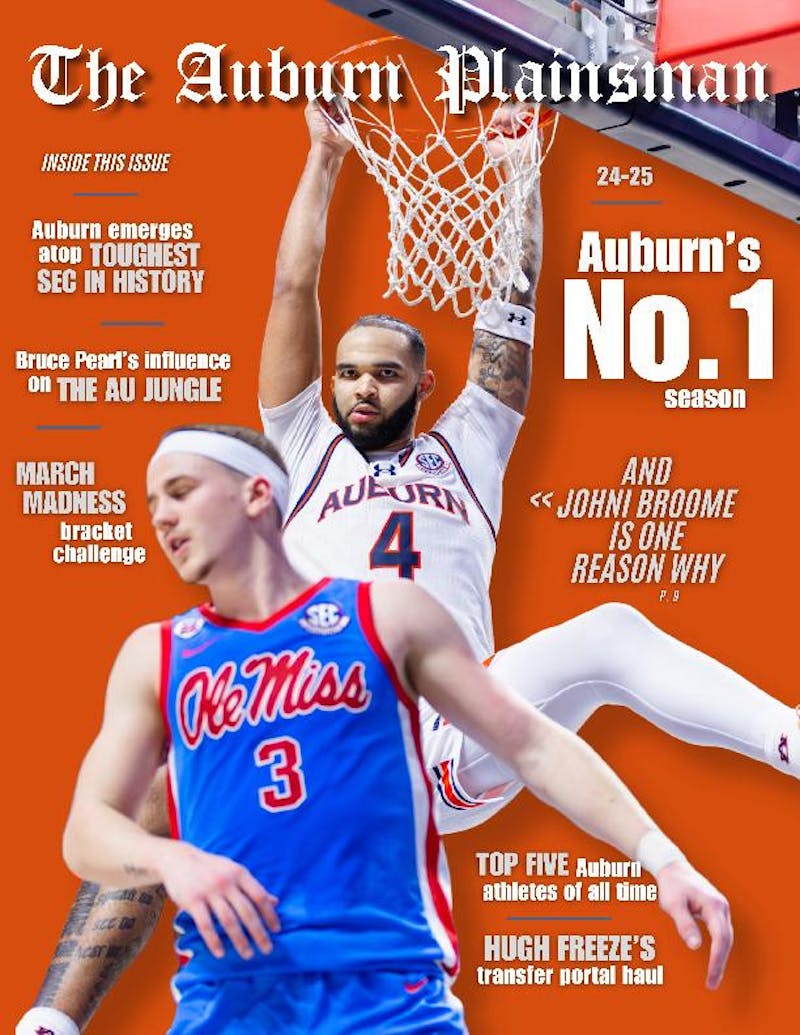Updated on May 1
The transition to remote learning affected different majors in different ways. While some majors had to transfer materials for lectures online, other majors were affected in a more intense manner, as some course components couldn't simply be moved online.
The apparel merchandising and apparel design majors are based heavily on face-to-face interaction and rely on the use of Auburn University’s studio access for materials needed to produce the required projects for the classes.
Emily Stone, junior in apparel design and production management, is in her capstone semester, where students develop a line based on a brand of clothing. The students are required to work in groups and present the line in a fashion show at the end of the semester.
“This is a class usually taken by seniors, and I know it is so hard for them to work hard on their line and not get to have a show at all,” Stone said. “We all thankfully have sewing machines at home, but it’s obviously more challenging without having a teacher to help you and also not having your group there to ask for their opinions.”
The Capstone semester is the highest level in the apparel design major, and there are three groups that present their projects at the end of the year. Stone’s group was doing a line development for the brand Glossier.
“Our main focus is our final presentation, which is going to be online,” Stone said. “We are working on having Zoom conferences with our individual groups and figuring out how to present our project. However, a lot of us have not even started our final piece because our models are seniors, and we cannot fit them during this time to get the right sizing.”
Many students expressed the challenges that came with having to complete the garments at home.
“In the studio, we have a serger machine, which is how we finish all the seams so the fabric won’t unravel,” Stone said. “It’s one example of the machines that Auburn provides that are too expensive to have as a machine at home.”
Anna Kate Taylor, freshman in apparel merchandising, was in the Textile Complex and Global Consumer classes, which are freshman-level courses in the department of consumer and design sciences within the college of human sciences. Her classes that require more hands-on experience are meeting via Zoom, but the classes that focus on the history of apparel merchandising are using pre-recorded lectures via Panopto.
“The atmosphere of the classes has really changed,” Taylor said. “However, they are still doing a great job, which makes me really proud to be a part of this program.”
Every spring, the Apparel Merchandising Association at Auburn hosts a fashion event that is prepared throughout the year. This event was cancelled due to the closure of Auburn's campus. Consequently, the materials that the capstone students have produced are not able to be shown during this event.
“For the event, I was planning on marketing it through chapter visits and being involved as much as I could freshman year,” Taylor said.
Taylor said she was planning on going to London for a study abroad spring break trip sponsored by the college of human sciences. During this trip, the students go to design studios, a workshop at the London College of Fashion and study solely on fashion for the week. This trip was also cancelled due to the pandemic.
“As a college, we put an emphasis on study abroad,” Taylor said. “I was looking forward to seeing how other countries work their industry, and then it was taken away. I knew, of course, there was a bigger picture to the cancellation of the trip, but it was still upsetting.”
Lucile Duncan, senior in apparel design with a minor in sustainability, was enrolled in the fashion event management and production, development and technical design courses.
“In the technical development class, we normally work in lab three days a week for about two hours, during this time we usually have all of the equipment needed provided for us in class,” Duncan said. “The transition to online has definitely made things more complicated, especially not being able to collaborate and ask questions with classmates.”
Duncan said their semester-long projects were still due, and they picked up their pattern paper at the Opelika Sewing Center. She said their professor is asking students to take pictures of their garment projects to send to her. Her professor hosted a one-on-one zoom meeting so that the students could present their projects.
“Using home sewing machines is more tedious than the industrial grade ones that the University provides,” Duncan said. “The process of brainstorming without being able to meet with fellow classmates is definitely harder, too.”
Duncan was the modeling chair for the fashion event management course. She explained her position was to interview models, direct the photoshoot and host the practices for the models.
“Of course I was sad the event got cancelled, but the health of the spectators is more important than the event,” Duncan said. “I definitely understand and agree with the university cancelling it.”
Duncan described the process of switching to an at-home studio environment. She said her kitchen and living room areas have become a makeshift apparel lab. She is lacking a dress form to fit her clothing to, which makes her projects more challenging.
Tori Vansant, junior in apparel merchandising with a minor in business, is currently taking professional development for human sciences, aesthetics and merchandising retail management.
“I am personally a very in-person, hands-on learner, so doing classes online takes some of the creative aspect away,” Vansant said. “Although we are doing group projects, so I still get to have conversations with my group and get work done that way.”
Vansant explained one of their projects, which is a group project that comes up with a full business plan on how those students would rework certain aspects of a fashion company. She said they are currently working on the math portion of the project, which was much easier to collaborate on in person.
“I definitely think CAD was prepared for the switch,” Vansant said. “A lot of the material was already online for my classes.”
Young A. Lee, who is an associate professor for the department of consumer and design sciences, teaches computer-aided design for apparel and sustainability theory and applications. She explained that her classes were not affected heavily by the switch to remote learning.
In Lee's computer-aided design class, she teaches design elements using computer software with two-dimensional and three-dimensional virtual simulations for the apparel industry. She said this is all used to build their portfolio at the end of the semester.
In the sustainability theory and application class, Lee teaches different types of sustainability theories available, and that information is then used to develop their research project throughout the semester.
“The switch to online for my course is not affected as much as the design courses,” Lee said. “All the material that Auburn provides for my students is still provided online, so I did not have any issues for them in their learning environment.”
Lee explained that her courses already heavily relied on Canvas, so the switch was pretty normal.
“This pandemic really made the instructors think about the future and our discipline in apparel design,” Lee said. “It gives us time to think how we are going to prepare for the students to be ready for a time like this. It’s a good time for our students to engage in virtual design and incorporating it into our curriculum.”
Clarification:
A previous version of this story quoted a student who stated that freshman are primarily in charge of model casting and the bulk of the marketing for the fashion show event. Two students, Elizabeth Harris-Fain and Ashley Henton, emailed The Plainsman stating there was a class in which students helped plan this year's event. The class was called "fashion event planning and management." The students in that class were not singularly comprised of freshmen, according to Harris-Fain and Henton. This article has been updated to account for the clarification.
Do you like this story? The Plainsman doesn't accept money from tuition or student fees, and we don't charge a subscription fee. But you can donate to support The Plainsman.





